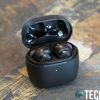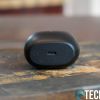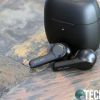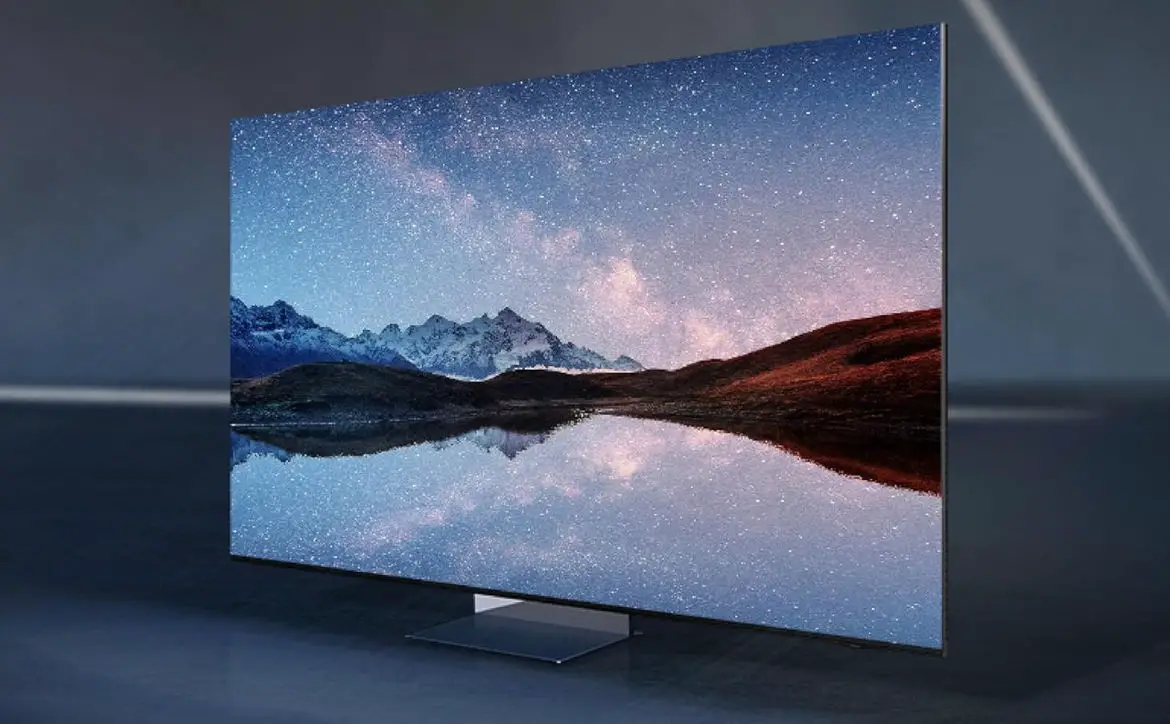
We’ve reviewed two other products from EarFun in the past and they turned out to be really great products. The company has sent us their new earbuds to review, this time a true wireless pair.
Our EarFun Air TWS earbuds review looks at a pair that have up to a 7 hour playback time per earbud, 35-hour battery life, an IPX7 rating, and more. Continue to read our full review down below.
Specifications
| Model | TW200 |
| Bluetooth version | 5.0 |
| Bluetooth frequency | 2.402GHz-2.48GHz |
| Bluetooth profile | A2dP, AVRCP, HFP, HSP |
| Maximum working range | 15m (50ft) without obstacle |
| Battery capacity | 55mAh x 2, 500mAh (charging case) |
| Charging time | • 1.5 hours (earbuds) • 2 hours (charging case with USB-C) • 3.5 hours (charging case via wireless charger) |
| Playtime | Up to 7 hours, total 35 hours |
| Input | DC 5V / 1A |
| Rating | IPX7 |
| Dimensions | 53.3mm x 52mm x 34mm |
| Weight | 51g/59.87g with charging case |
What’s in the box
- EarFun Air TWS
- Charging case
- 4x ear tips
- USB Type-C cable
- User Manual
Design
The EarFun Air TWS earbuds take shape of something we are all familiar with: Apple’s Airpods. This is due to the stem design that is becoming commonplace on true wireless earbuds. When looking at the stems you’ll notice EarFun has their branding towards the bottom. Just above that is the touchpad along with a noise-canceling mic for when you’re talking on the phone. That same mic spot is also home to some LED indicators that will turn different colors depending on what you’re doing. Flipping the EarFun Air earbuds around and you’ll see an “L” and an “R” for which ear to place them in. On the inside of the main earbud are the gel ear tips that can be changed out to better fit securely in your ear.

The bottom of each Air TWS earbuds has two gold connector plates that work with the case to charge up the earbuds. There’s also another noise-canceling microphone that’s placed in between the two gold charging plates.
As for the case, you’re getting a small pillbox style case like most other TWS cases out there. There’s a single LED light that lights up depending on the battery life left in the case. Above the LED indicator is a lip for opening up the case, revealing the earbuds. Upon opening the case you’ll see that it’s molded to fit the EarFun Air perfectly. When you take the earbuds out, you’ll see a magnet that holds the earbuds in place and towards the bottom of the case, you’ll see two gold connector pins that, again, charge the earbuds when connected. Last but not least, inside the case you’ll find a button that’s used to start the pairing process.
Ease of Use
When it comes to pairing the EarFun Air TWS earbuds, open the charging case with the earbuds in them to make the unit discoverable. Next, press the charging case button for two seconds to make the earbuds discoverable. Open your Bluetooth settings on the device you’ll be using, select “EarFun Air” from the list and they’ll pair within seconds. When paired, the LED light on each earbud will turn blue.
As far as function goes, this is also pretty standard for some wireless earbuds with touch controls. The touch controls include:
- Play/Pause: Double-tap either left or right earbud
- Next track: Triple tap right earbud
- Volume Up: Touch and hold the right earbud
- Volume Down: Touch and hold the left earbud
- Voice Assistant: Triple tap left earbud
- Answer/End call: tap left or right twice
- Reject a call: Tap and hold left or right for 2 seconds
- Answer a second call and place other on hold: Triple tap left or right
- Transfer two calls: Triple tap left or right
- Reject second call: Tap and hold left or right for 2 seconds
A great perk that the EarFun Air comes with is the ability to use a single earbud while on the go. All you have to do is take out either the left or right earbud and place it in your ear. The only drawback is that you can control volume up with the right earbud and volume down from the left. If you want to fully adjust volume while only wearing one earbud, you’ll need to take our your connected device and adjust the volume from there.
Something I ran into was the earbuds don’t seem to be as sensitive as you think when it comes to the touchpad. They didn’t always register my touch even when I was directly tapping on the pad. It wasn’t like that every time but did become annoying when people were trying to talk to me and playback wouldn’t pause.
Sound Quality
Just like the other two EarFun units we’ve reviewed in the past, the sound on the EarFun Air TWS earbuds is pretty comparable. They sound pretty good when it comes to mids, lows, and highs. Vocals sound clean and crisp and you’re able to hear each instrument in a song. There’s enough bass in these earbuds to give it great sound and aren’t overbearing.
At just about any volume I set the earbuds too, they kept the same sound quality. That’s including putting the volume at max. I didn’t notice any distortion or muffledness.
Overall, I do really like how the EarFun Air sound when it comes to listening to music or watching some shows.
Microphone Quality
The EarFun Air comes with 4 microphones that’ll block out up to 80% of all background noise allowing you to speak to anyone more clearly on the phone.
When it came to having a conversation with people, they were able to hear me clearly without any issue. At times, which was to be expected, people could hear other background noise such as the automated voice at self check-outs, other people’s conversation, or any power equipment being used.
It’s great that most background noise is canceled out, so those that like to talk or want to talk on the phone won’t have any issues with people being able to hear you.
Battery Life
Another great thing about the EarFun Air TWS earbuds is its battery life. According to EarFun, you’re able to get up to 7 hours of playback from the super tiny 55 mAh battery. During testing, I was able to get around 6 to 6 1/2 hours of playback before needing to charge them.
The charging case on the other hand will give you an extra 28 hours of battery life between each charge allowing you to get around 35 hours total with the earbuds and the case. It didn’t take long to get to that 35 hours during the week since I listen to music while I work. Either way, 35 hours is plenty of time for people to listen to music or watch their favorite shows.
When it comes to charging the case or earbuds back up, it takes about an hour-and-a-half to charge the earbuds, about two hours to charge the case via Type-C, or about three-and-a-half hours if you’re going to be wirelessly charging.
As mentioned previously, the case has an LED light indicating battery remaining. When it is green there is more than 30% battery life left, orange is less than 30%, red is less than 10%, and flashing red is less than 1%.
While we were able to get close to EarFun’s stated battery life specifications, keep in mind that hours may vary depending on environment.
Price
The EarFun Air TWS earbuds are listed with a regular price of US$99.99 on the EarFun website and $79.99 on Amazon. If you’re interested in purchasing them, they’re currently selling for US$59.99 on both sites. For the current selling price, it’s pretty affordable considering you’re getting a nice design, long battery life, and great sound quality.
Photo Gallery
Wrap Up
Personally, I do like the EarFun Air TWS earbuds. I think they’re a great pair of TWS earbuds. The only issue I had was with the touchpad not registering every touch. Other than that, you can’t deny a US$60 price tag, great sound quality, a small form factor case, and long-lasting battery life.
In some of our articles and especially in our reviews, you will find Amazon or other affiliate links. As Amazon Associates, we earn from qualifying purchases. Any other purchases you make through these links often result in a small amount being earned for the site and/or our writers. Techaeris often covers brand press releases. Doing this does not constitute an endorsement of any product or service by Techaeris. We provide the press release information for our audience to be informed and make their own decision on a purchase or not. Only our reviews are an endorsement or lack thereof. For more information, you can read our full disclaimer.
Last Updated on February 3, 2021.


















